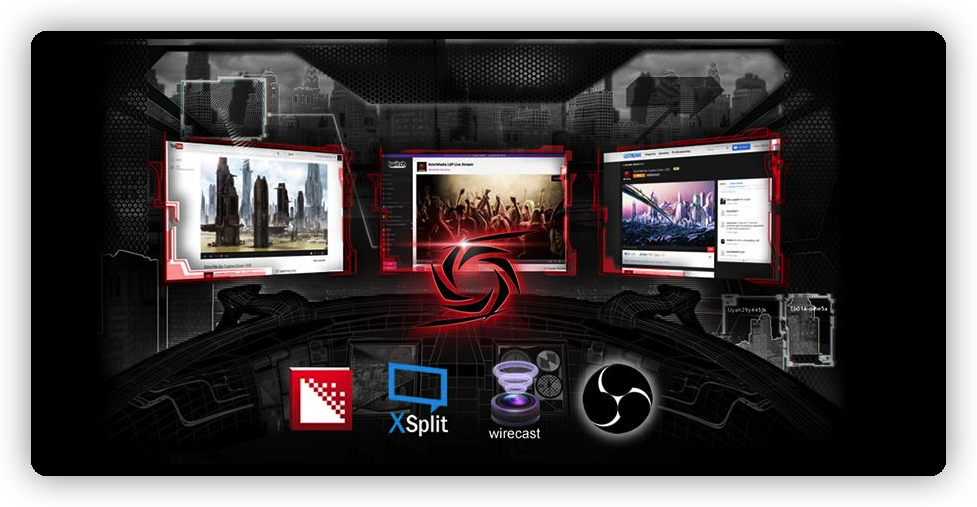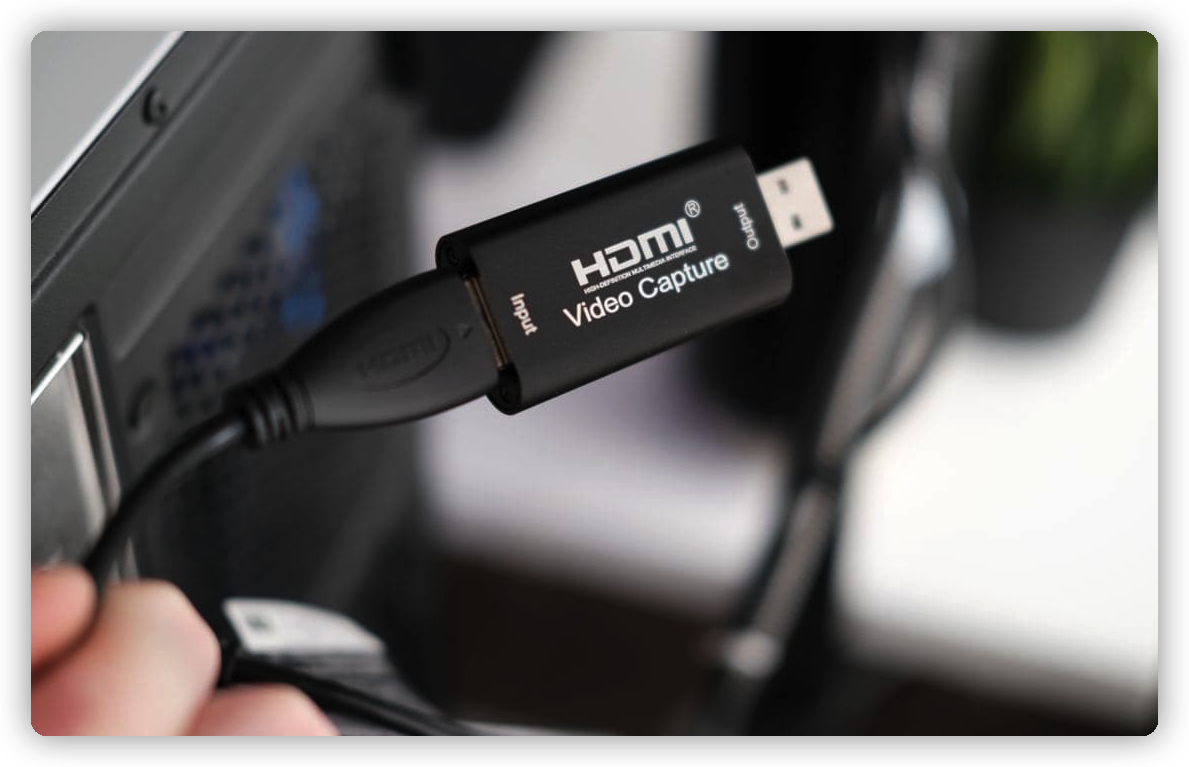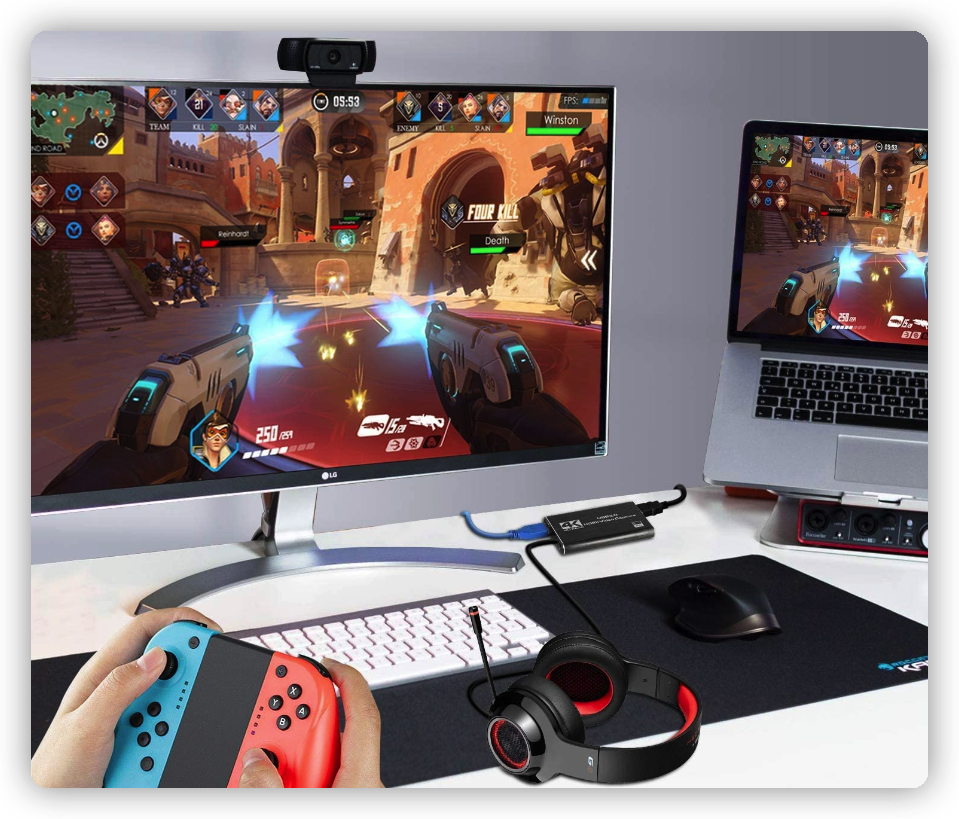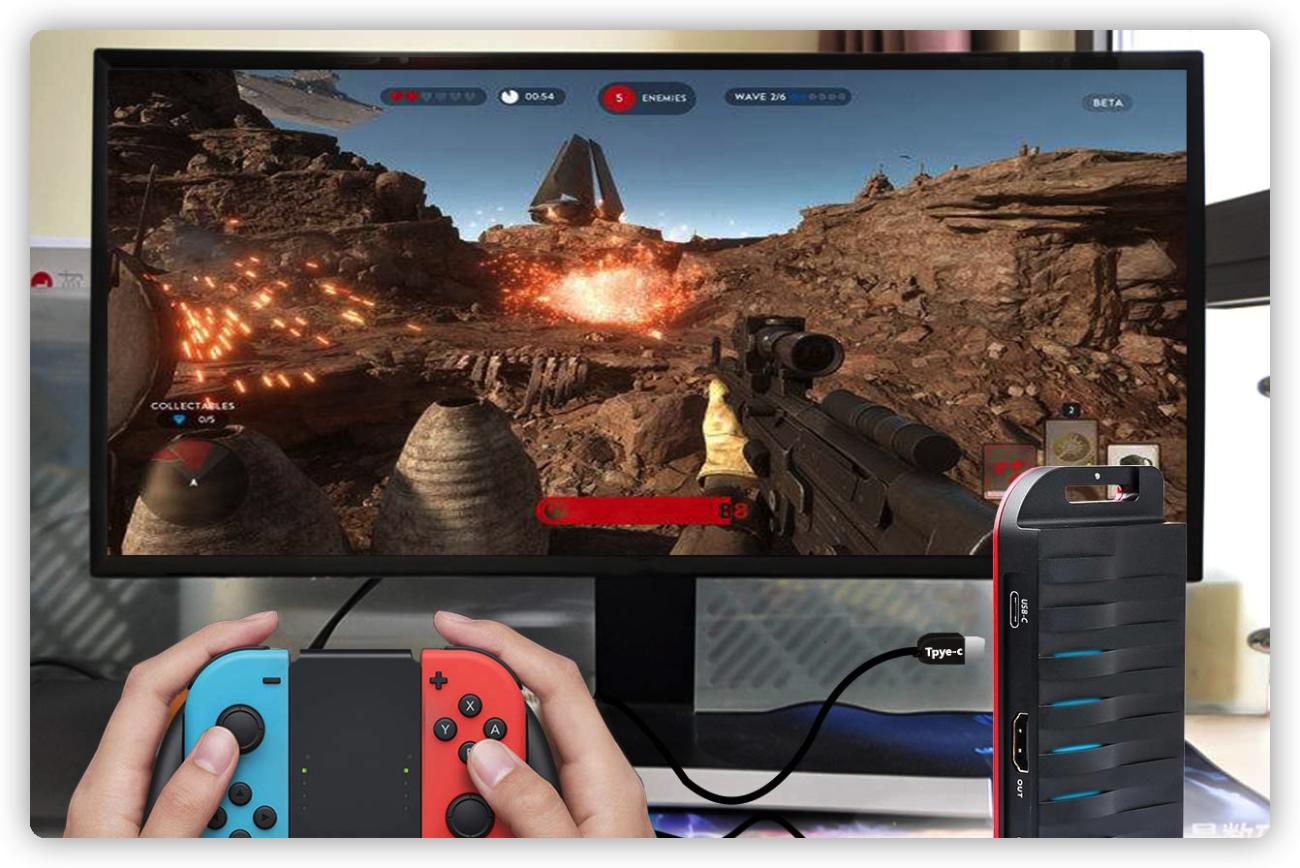- When you’re a gamer and have a Xbox, PlayStation 4, or an older Nintendo system such as an NES. A capture card is something you might want to consider getting. Let you put gameplay videos on your PC so that you can share them with the world — just to show off how outstanding you are at gaming or for other reasons, like for recording a walkthrough of a tricky level.
- However, how do you know if you’ll need one before getting one, and how much should you expect to pay for one? Here’s what you need to know about the different types of capture cards, including how they work and how much they cost.
In this article, you will learn:
What Is a Capture Card?
A capture card is a device that allows you to record or live stream video and audio from another source. It lets you connect your console directly to your computer and play on your PC instead. It’s like a USB stick for your TV: you plug it into your computer, then connect it to your TV via an HDMI cable.
But what makes a capture card different from just using your computer to play games? Well, they’re great for recording mobile gaming sessions or live streaming live events—for example, if you want to record yourself playing Fortnite or stream the Super Bowl online!
Capture cards also come with built-in microphone inputs, which means you can connect a microphone directly to the capture card and record high-quality audio to accompany your gameplay footage. Then you can edit it and post it on YouTube or upload it to Twitch TV as a video of your gaming live on your PC.

How Does a Capture Card Work?
Simply it works by taking in video signals from your gaming console or other device, which are then processed by the card’s internal hardware and sent to your computer via USB cable. You can also connect your capture card directly to a TV or monitor via HDMI cable for viewing. But this is unnecessary for editing and uploading content.
It’s like a video splitter, but it does more than just split the signal—it also processes it. Capture cards can do things like down sample, upscale, and convert between different formats.
They are useful for people who have multiple computers in their home or office, but only want one screen to display on their monitor. They’re also great for gamers who want to record gameplay while they’re playing, or stream their gameplay live via Twitch or YouTube Gaming.
What’s The Benefits
Using a capture card has several benefits over recording directly from your gaming console:
- You can record gameplay from multiple consoles at once. For example, if you have both a Xbox One and PlayStation 4, you can use one capture card to record footage from both consoles simultaneously so that you don’t need two separate devices (plus all the extra cables). This saves space on your desk and money since it’s less expensive than buying two different devices.
- can be useful if you want to record gameplay footage or create videos with effects that can’t be done with a standard camcorder.
- When you’re using a capture card, any sound coming through your speakers will also be recorded on your computer’s microphone input unless you use an external microphone. This can be handy if you want to stream gameplay live without having to shout into a microphone every time something exciting happens!
Are There Any Drawbacks?

There are many benefits to using a capture card, but there are also some drawbacks.
The biggest drawback is that you need to have the right equipment in order to use one. For example, if you want to record your gameplay on PlayStation 4, then you will need a capture card that is compatible with the PlayStation 4. In addition, if you have an older version of a game console, so it might not be compatible with newer versions of the same game console. This means that you would have to buy a new capture card or upgrade your old one in order to get better recording quality.
Another drawback is that not all games come with built-in recording features. This means that if the game does not have this feature built into it already, there’s nothing else left for you to do except install a third party software program onto your computer before playing the game itself which will allow for recording only (rather than live streaming).
Another potential drawback is that some capture cards aren’t compatible with all computers. However, most modern computers will run any type of capture card with no problems.
The last one is that the quality of the video may not be as good. With live streaming, there’s no lag between what you see and what is happening in the game, but with capture cards there can be a delay between when you click on something and when it happens on screen. This can make watching movies or playing games frustrating if there is too much lag between your actions and the things happening in front of you.
How to Choose?
Choosing a capture card can seem like a daunting task. If you’re trying to stream, or if you just have a hunch that it’s time to upgrade your setup, we’ve got some tips to help you choose the right capture card for your needs.
The first is the resolution of your game. If you’re playing on a 1080p monitor, then you’ll want a video capture card that can output at least 1080p resolution. If you’re using an external monitor, that’s 4K or higher-resolution, then you’ll want something more powerful.
Next, think about how many inputs and outputs your capture card needs. If you only plan on using one game console, then it doesn’t matter too much how many inputs or outputs it has—but if you plan on using multiple consoles at once, then look for a card with over one input and output option for each console type (so, for example, if one of your consoles supports HDMI input and output, look for something that also supports DVI).
Finally, think about whether you need features like audio recording or streaming services built into the card itself (or if you’d prefer to use those features through software). Look for cards with these features if they’re important to your setup.
Finally, how much will it cost, and how much storage space does it take up?
The answers to these questions will point you in the right direction for your specific needs.
Once you’ve figured out what features are most important to you, check the manufacturer’s website for compatibility lists. They should list which operating systems are compatible and how much RAM is required by each model. You can also find information about drivers and software compatibility as well.
Should You Get A Capture Card?
The answer is, it depends. It depends on what your needs are and how much money you have to spend. If you’re looking for professional-quality streaming content, then a capture card is essential.
If you want to stream video games or play them on your PC, then a capture card isn’t necessary—you can use your graphics card instead. But if you want to stream video from the internet, or record gameplay from consoles like the PlayStation 4 or Xbox One, then a capture card is the way to go.
Whether you should get a capture card depends on your needs and budget. If you’re looking to stream professional-quality content, then a capture card is essential—it’s the only way to get the best quality video.
If you’re just looking to stream casual content at home, though, a capture card isn’t necessary. Most modern computers have built-in video capture capabilities, and most modern TVs have HDMI ports that can connect directly to the computer.
What Are The Types Of Capture Cards?
There are five main types of capture cards. Here is a detailed summary of each type:
1. HDMI Capture Card
This type can be used on PC, Mac, and laptops that have HDMI ports. The HDMI port allows the video card to connect to a monitor or TV screen so you can see what you’re recording in real time. If you use this type of capture card with a PC, you need a graphics card that supports the HDMI output.
2. USB Capture Card
This type of capture card work on both Macs and PCs with USB ports (2.0 or later). It connects directly to your computer via USB cable so there’s no need for an external power supply or separate monitor—just plug it in and start recording!
3. FireWire Capture Card
FireWire capture cards work on both Macs and PCs with FireWire ports (400 or 800). They connect directly to your computer via FireWire cable so there’s no need for an external power supply or separate monitor—just plug it in and start recording!
4. Component Capture Card
Component capture cards connect to your TV screen with RCA cables (red, blue, and green connectors) that you can use to get video or audio into your computer. This type is ideal for capturing high-quality video from DVDs and some DVRs.
5. Composite Capture Card
Composite capture cards work on both Macs and PCs with RCA ports (red and white connectors). They connect directly to your computer via RCA cables so there’s no need for an external power supply or separate monitor—just plug it in and start recording!

Popular Best Capture Cards:
Best Capture card that are available from several manufacturers, and some models are compatible with several platforms. Here is a list of the most popular capture cards.
- Thompsontek (PC, Mac, Linux)- best capture card for streaming
- Zyxel Video Capture for Windows
- Computek (Mac)
- Media Smart (Windows, Mac, Linux)
- Video Maker Suite – best capture card for PS
- Dazzle Video Capture for Mac
- Elgato Game Capture HD Software
- AverMedia Live Gamer HD
How to Set Up Capture Card?
If you’re looking to connect your Game Capture Card, it’s a very simple process.
- First, plug the card into your computer’s USB port.
- Next, turn on your game console and make sure that you plugged the proper cables in. For example, if you have a Xbox One, you’ll need to make sure that both the HDMI and power cables are plugged in. If you have a PlayStation 4, make sure you plugged the HDMI cable in but leave the power cable unplugged (you’ll use this later).
- Now that your console is on and connected to your computer, you’ll need to set up your capture software.
- Finally, all you need to do is watch and record! It will store your captured footage in a folder on your hard drive called “PS4” or “Xbox One”. You can customize the file location of this folder in the preferences menu.




